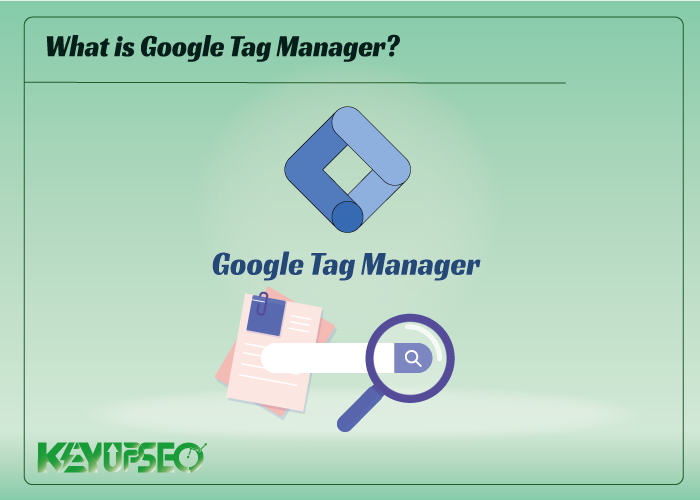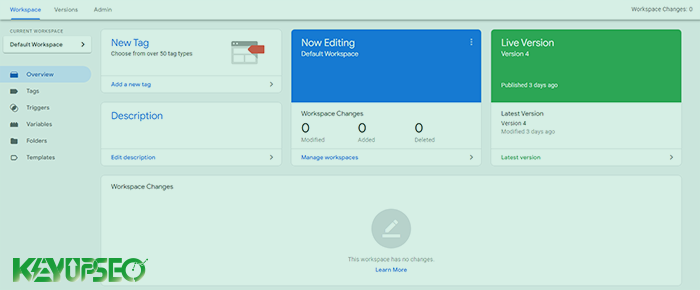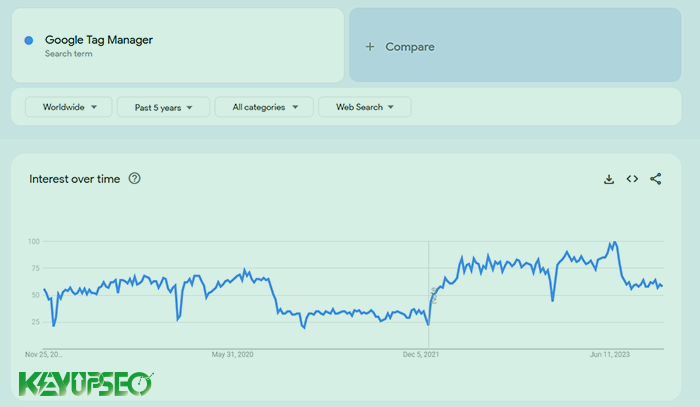
Importance of GTM along with reasons to use it
We have given the definition of Google Tag Manager and its importance along with the reasons for using GTM in this article from the KeyUpSeo blog.
As you know, Google uses various tools to guide its users. Google Tag Manager is one of those free tools that is very efficient for website management.
SEO site managers should be able to increase site visits traffic by using various tools and give more power to the site's growth in Google results.
As there are special tools created for advertisers and SEO professionals; A free tool has also been created for website developers. In the following, we intend to provide you with the Google Tag Manager tool and the reasons for using it.
Before any topic, it is better to know what Google Tag Manager is and what uses it can have for you.
What is Google Tag Manager?
Google Tag Manager (GTM) service was created by Google for easy and convenient management of tags. In fact, Google Tag Manager acts as an interface between your site (or application) and tags (eg Google Analytics tag).
With its help, you can determine when your tag will be loaded (page load time, click, form submission, page scrolling, etc.) and on which pages of your site.
The best way to learn Google Tag Manager is to take action and put the tag on your site!
Some users confuse Google Tag Manager with Google Analytics. Note that these two tools are not substitutes and both can be used. In this way, with the help of the tag manager tool, you can load the Google Analytics tag on your site.
Of course, it is better to use both tools for your site.

Why should we use Google Tag Manager?
After knowing what Google Tag Manager is, now we want to know why we should use it. Here are 7 important reasons for using GTM along with their complete explanations. Join us at KeyUpSeo which is one of the best traffic increasing system.
-
Inserting or quickly changing tags on the site
By using Google Tag Manager, you no longer need to ask the developer to change your site codes every time you need to add or change a tag on your site.
It is enough to put the Google Tag Manager tag on your site once so that you can change the tags on your site whenever you need; Manage it quickly through Google Tag Manager's simple user interface.
-
Control all tags from a dashboard
Before the introduction of Google Tag Manager, JavaScript tags and pieces of code were scattered inside different project files.
To change any of them, you had to find them first! Thanks to this powerful tool, all the tags are now in one place and you can add a new tag to your site or make the changes you want faster.
-
The possibility of testing before publication
In Google Tag Manager, it is possible to test tags before publishing them. In fact, Google allows you to view and debug changes before public release. For this purpose, plugins like Tag Assistant will also help you.
-
Simplifying the tracking of all types of events (Event Tracking)
To track events like clicks, form submissions, and more, the developer has to add JavaScript codes to the website. But using the Google Tag Manager tool here makes things much easier.
In this service, there is a feature called Auto-Event, which makes it easier to track events and you will no longer need to add JavaScript code to your site.
With the training of Google Tag Manager, you can easily create triggers so that your tags are activated automatically when these triggers occur. Some of the triggers built into GTM are:
- Click
- Click on the link
- Submit the form
- Page scrolling
- Time spent on a page, etc
Google Tag Manager's built-in tracking functions are constantly expanding, and you can also create new features yourself to easily track things like exit intent, new views, video streams, and more.
What is the point of tracking events?
Event Tracking allows you to gain insight into user behavior on your site. Are they engaging with the content? Do they fill out your forms? Do they watch videos to the end? Or do they read your blog articles to the end?
It can also use these events to create a Goal in Google Analytics or Google Ads.
Just keep in mind that there are more difficult event trackings that you will need the help of your developer to set up. In fact, remember that Google Tag Manager gives you tremendous power; But GTM is not everything.
-
Ready Tag templates
GTM has a large number of tag templates that make it easy to create new tags. For example, to add a Google Analytics tag, just select it from the list of available tags and finally enter your analytics code in the Google Analytics Settings section.
Some of the tag templates currently available in GTM include:
- Google Analytics
- Google Ads Conversions
- Google Ads Remarketing
- Google Optimize
- Hotjar Tracking Code
- LinkedIn Insights
- Bing Ads Universal Event Tracking
- Pinterest Tag
- Twitter Universal Website Tag
-
Prescription system
After making any changes you make in your container, you must publish the changes to be applied to your site. A new version is created each time you publish, and you can roll back your site's tag changes to the previous version (or versions) at any time.
Let's say you made some changes to the tags and as a result there is a problem with your site. You can easily revert the changes to the previous version by going to the Versions page and easily solve a big problem!
-
Growing popularity of Google Tag Manager
Google is known for launching and killing great ideas. Google Tag Manager seems to have a different story than Google Reader, Google Talk or Google Plus; Because its popularity is increasing every day.

How does Google Tag Manager work?
There are three main sections in Google Tag Manager:
- tags
- triggers
- variables
Tag
Tag is a piece of code that is activated under certain conditions on the website. It can be tracking code (such as analytics code) or a piece of code that changes text or a certain element on your website.
When we create a new tag in Google Tag Manager; In fact, we want "something to be done", "page views are tracked", "link clicks are tracked and sent to Google Analytics", etc.
Trigger
A trigger is a condition that activates a tag if it exists. That the tag should be executed when viewing all pages of the site, or when registering a form or when clicking on a specific link. These are all examples of triggers that can be attached to one or more tags. When a certain condition (or set of conditions) occurs and the trigger is activated; All tags associated with it are executed.
Variable
Variable is the final member of this trio. Variables can hold a value and be used in tags and triggers. for example:
- They store data. (such as page address, website domain, product ID, link text, etc.)
- Maintains a set of data and settings. (For example, it maintains variables related to Google Analytics settings and related settings, which include Tracking ID, display advertising settings, Cookie Domain, etc.)
- Also, the variables include a complex function.
Release date : 4 March, 2024













